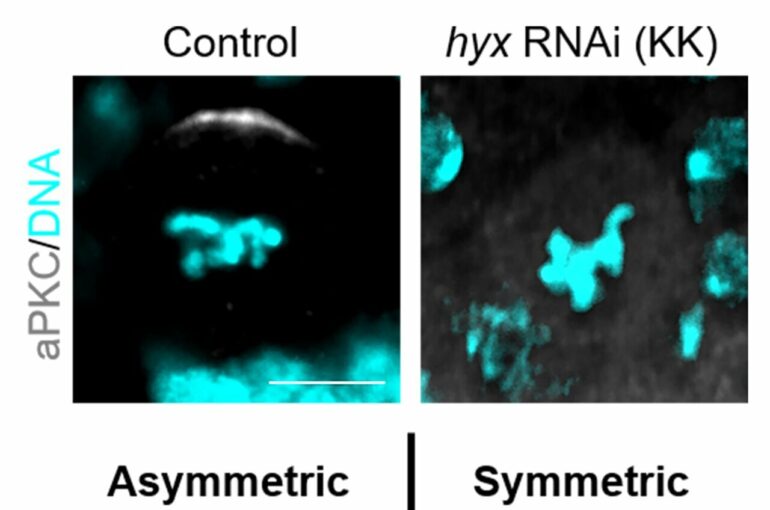Scientists in Singapore and Spain have gained new insights into the activity of a tumor-suppressor protein in fruit flies that could aid the understanding of some human cancers. The study, published in PLOS Biology, might eventually lead researchers toward new cancer treatments and prevention.
Duke-NUS Medical School scientists collaborated with colleagues from the Institute for Research in Biomedicine from the Barcelona Institute of Science and Technology, the Genome Institute of Singapore and NUS to investigate a human tumor-suppressor protein called Parafibromin. The normal activities of Parafibromin prevent tumors from developing, but deficiencies in these activities have been linked to several cancers, including hyperparathyroidism-jaw tumor syndrome and breast, gastric, colorectal and lung cancers. Until now, the exact role of the protein in health and disease in the nervous system has remained unknown.
Although fruit flies and humans may seem very different, researchers often find that crucial molecular pathways, signaling and control systems are shared across many species, having originated early in the evolution of a diverse variety of organisms.
“As Hyrax—an evolutionarily-related protein—is the analog of Parafibromin, we examined it in brain cell development in Drosophila fruit flies as a first step towards better understanding,” said Dr. Deng Qiannan, first author of the study and Research Fellow with the Neuroscience and Behavioral Disorders (NBD) program at Duke-NUS.
“We discovered that the Hyrax protein plays an essential role during the development of the Drosophila central nervous system, and so we believe that Parafibromin may also perform a similar function in humans,” said Dr. Cayetano Gonzalez, a co-author of the study and Head of the Cell Division Laboratory at the Institute for Research in Biomedicine, Barcelona.
The results revealed previously undiscovered functions for the protein in controlling cell polarity—the asymmetric organization of proteins—in the stem cells that generate mature nerve cells. Loss of Hyrax function was found to lead to the overgrowth of neural stem cells in the Drosophila brain. This was linked to influences on cell structures called centrosomes, which coordinate cell division, and to the regulation of two other known tumor-suppressor proteins, Polo and Aurora-A kinases.
“Loss of cell polarity and centrosomal abnormalities are hallmarks of human cancers,” said Professor Wang Hongyan, the corresponding senior author of the study and Deputy Director of the NBD program at Duke-NUS. “These surprising new findings may be very relevant for understanding the role of Parafibromin in human cancers, perhaps especially in the brain.”
More research will be needed to explore whether these findings in fruit flies can be applied to Parafibromin in humans and the research team has already begun new investigations towards this goal.
“Translating basic scientific research into discoveries of clinical significance is a primary goal of medical research. Professor Wang and her colleagues have taken a very interesting first step that could one day have an impact on cancer treatment and prevention,” said Professor Patrick Casey, Senior Vice-Dean for Research at Duke-NUS.
More information:
Qiannan Deng et al, Parafibromin governs cell polarity and centrosome assembly in Drosophila neural stem cells, PLOS Biology (2022). DOI: 10.1371/journal.pbio.3001834
Provided by
Duke-NUS Medical School
Citation:
Learning about human cancer from fruit flies (2022, October 19)



